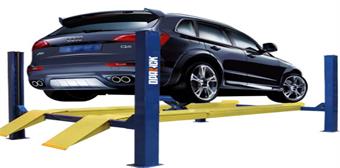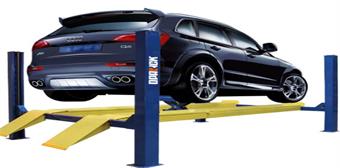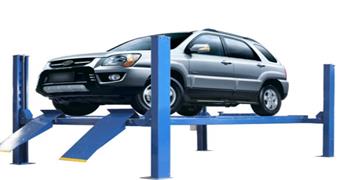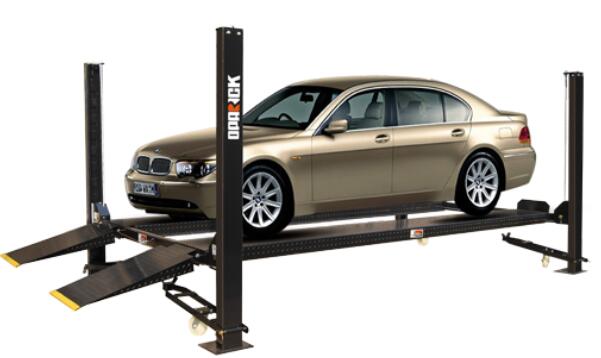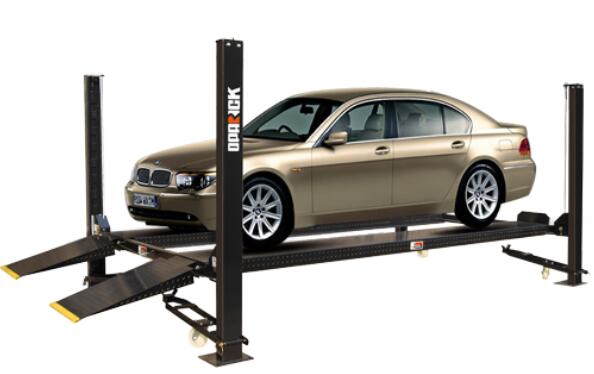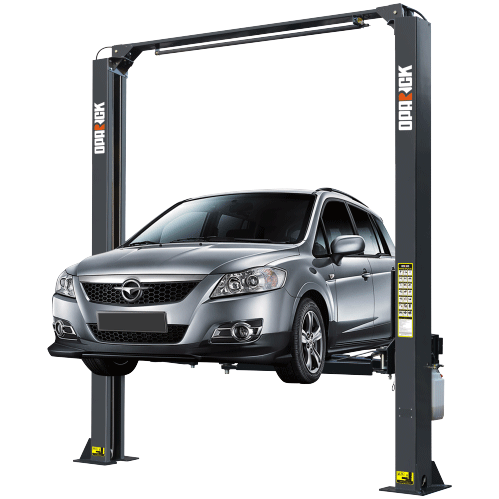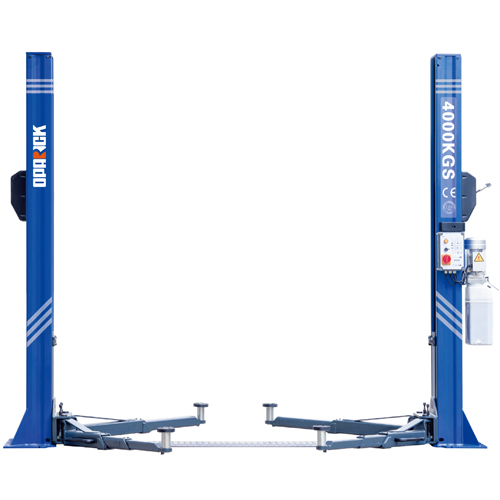Automatic Lift Type: Choose the Right Lift for You
If you are repairing vehicles, you will need a way to remove them from the floor. In the past, floor lifts were the most common, but that has changed today. In fact, there are now seven different types of lifts (tested and certified by the Auto Lift Institute). How do you determine which elevator type or combination of elevator types is right for your specific needs? It all starts with a better understanding of your options.
1.Two-post Surface-mounted Lifts
The two-post lift is bolted to the workshop and uses an electric motor to power the hydraulic system, which in most cases is responsible for lifting the vehicle. Two swing arms are attached to each column -- they swing under the vehicle, and adjustable legs are used to engage the frame or support the sub-frame, depending on the type of vehicle being servitated. Many two-post lifts are equipped with top mounted cut-off rods to ensure that the vehicle does not rise above a certain point for safety.
2.Four-post Lift
Four-post positioning lifts are also becoming very popular today. They are typically bolted to the floor and provide the ability to travel up and then drive away from the repair without requiring the mechanic to place an arm under the vehicle. In most cases, these lifts use vehicle tires to support the vehicle, which makes them ideal for use in situations where you only need access to the landing gear but don't need to remove the wheels for any reason. However, they can be equipped with a wheel-less system that allows the wheels to be removed for brake work, tire changes, suspension and steering service, and other jobs.
3.Traveling parallelogram lifts
Driving parallelogram lifts are interesting - they share the driving function of a runway lift, but require the vehicle to back up when the job is done. However, some can be provided with two runways, allowing the vehicle to travel up and then drive away rather than backing up. They are often used as alignment lifts and can be equipped with tire adjustment plates specifically for this purpose. Because of their strength and larger size, these lifts are often used when servicing large, heavy vehicles.
Scissor lifts have become increasingly popular in recent years and you'll find them used for a range of different service types, including oil changes, tire changes, alignment bays and more. This is because they can be equipped with frame joints for wheelless service, or they can support vehicles on wheels. While they work in a similar way to parallelogram lifts, scissor lifts do not move the vehicle forward or backwards when raising or lowering - they move directly up and down. You can also purchase the open-mounted variety, or you can choose the buried variety. Above-ground scissor lifts are typically used to service heavy vehicles, while surface-mounted lifts are more suitable for consumer-grade vehicles.
5.Underground elevator
Once the most prominent type of vehicle lift, in-ground lifts have become less popular with the rise of lighter, more adaptable configurations, such as two- and four-post floor lifts. Most of the components of an in-ground lift are usually located in a special enclosure underneath the shop, which requires different planning and construction steps. You will find many different types of lifts in this subcategory, including column lifts, scissor lifts, and more, depending on the weight class of the lift. Most designed for heavy-duty work use two or three pistons or scissors to ensure stability and strength. While underground lifts may require the most planning and most important site installation preparation.
6.Wheel joint moving device
Need the ultimate in flexibility and configuration options? Planning to service many different types of vehicles? If any of these are the case, you need to at least consider wheeled mobility units, also known as mobile column lifts. Interestingly, these lifts are completely mobile and are not tied to any single location. They usually have wheels on the back that allow them to be rolled to a new location for use. They are used in pairs (usually two, four or six) and can be used for everything from consumer-oriented vehicles to heavy-duty vehicles, buses and emergency vehicles. While these lifts can be positioned to fit any vehicle setup, they do require a hard, level surface underneath them for stability.
7.Medium and low level frame joint lifts
Depending on the type of store you open, you may benefit from using a low or mid-level frame lift. These can be parallelogram or scissor lifts, and they typically engage the vehicle's frame or subframe to provide excellent stability. However, because of their low level of rising, they are often used for services that require only the wheels to be closed, such as tire changing stations, brake work or bodywork repairs. This type of lift makes it difficult to access the vehicle's chassis, so they are not often used in stores where access to the drivetrain, oil pan, exhaust or transmission may be required.

